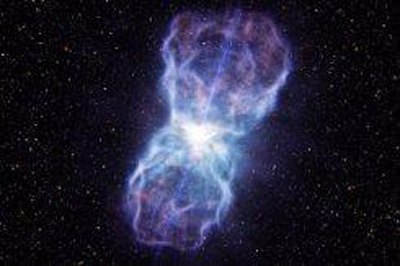 A mystery wave of cosmic radiation that smashed into Earth in the eighth century may have come from two black holes that collided, a study published on Monday says, according to AFP.
A mystery wave of cosmic radiation that smashed into Earth in the eighth century may have come from two black holes that collided, a study published on Monday says, according to AFP.
Clues for the strange event were unearthed last year by Japanese astrophysicist Fusa Miyake, who discovered a surge in carbon-14 — an isotope that derives from high-energy radiation — in the rings of ancient cedar trees.
Dating of the trees showed that the burst struck the Earth in either 774 or 775 AD.
But what was the nature of the radiation, and what caused it?
Space scientists lined up the usual suspects only to let them go. There was no evidence that an exploding star, also called a supernova, occurred at that time, they found.
The Anglo-Saxon Chronicle, a record in Old English, makes a dramatic reference to the appearance of a “red crucifix” seen in the skies after sunset. But that happened in 776 AD, which was too late to tally with the event marked by the tree rings.
Also ruled out was a tantrum by the Sun, which can throw out sizzling cosmic rays or gouts of energy called solar flares.
Writing in Monthly Notices, a journal of Britain’s Royal Astronomical Society, German-based scientists Valeri Hambaryan and Ralph Neuhaeuser have come up with a new explanation.
The pair suggest that two black holes collided and then merged, releasing an intense but extremely brief burst of gamma rays.
A collision of neutron stars or “white dwarf” stars (tiny, compact stars near the end of their lives) may also have been the cause, say Hambaryan and Neuhaeuser of the University of Jena’s Astrophysics Institute.
Mergers of this kind are often spotted in galaxies other than our own Milky Way, and do not generate visible light.
R.S

